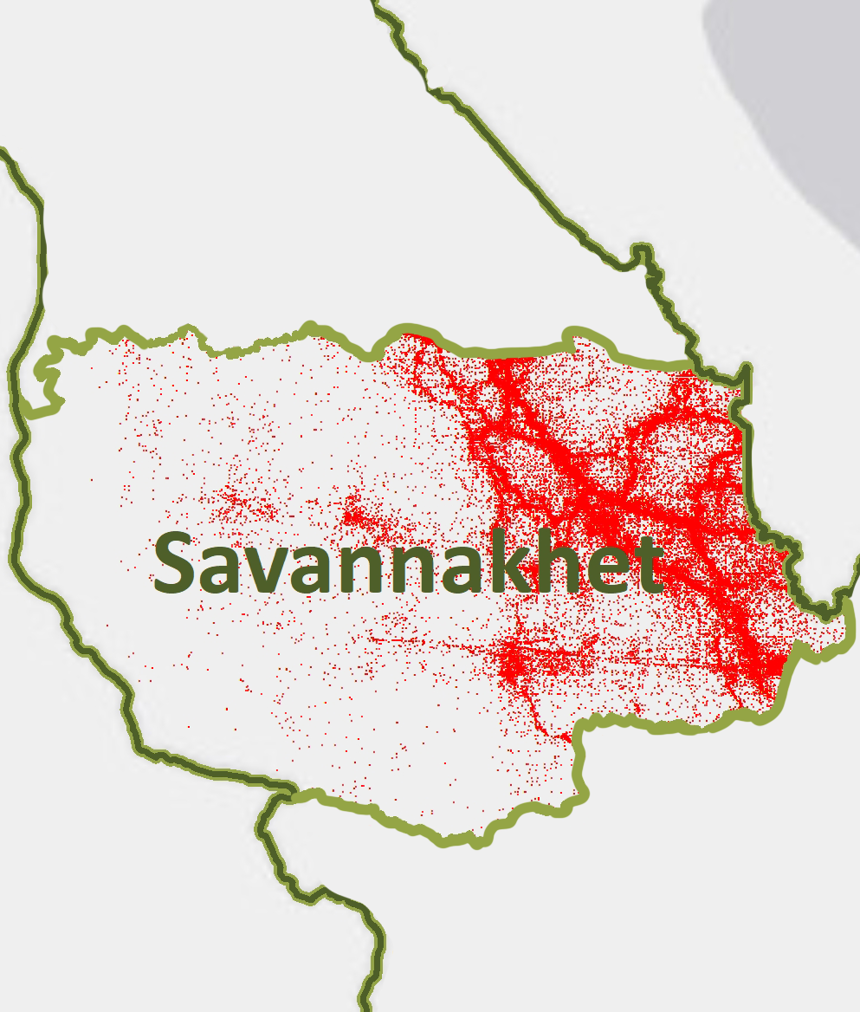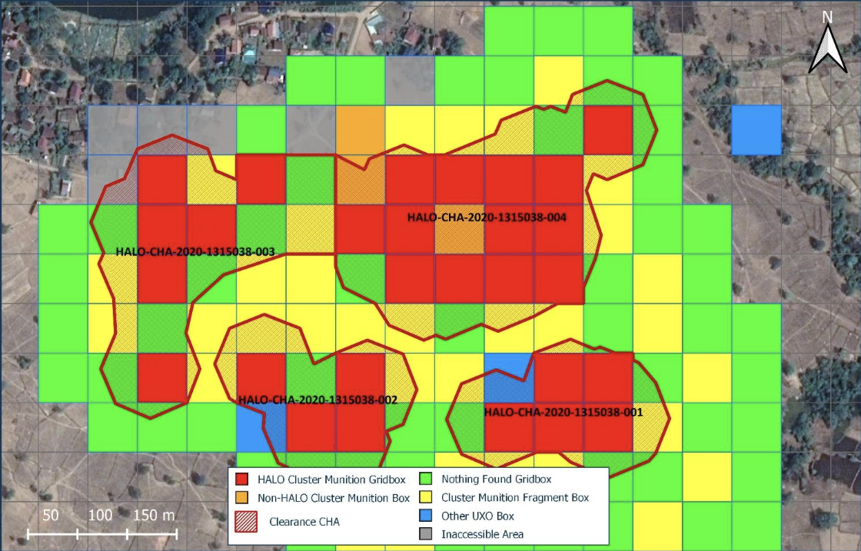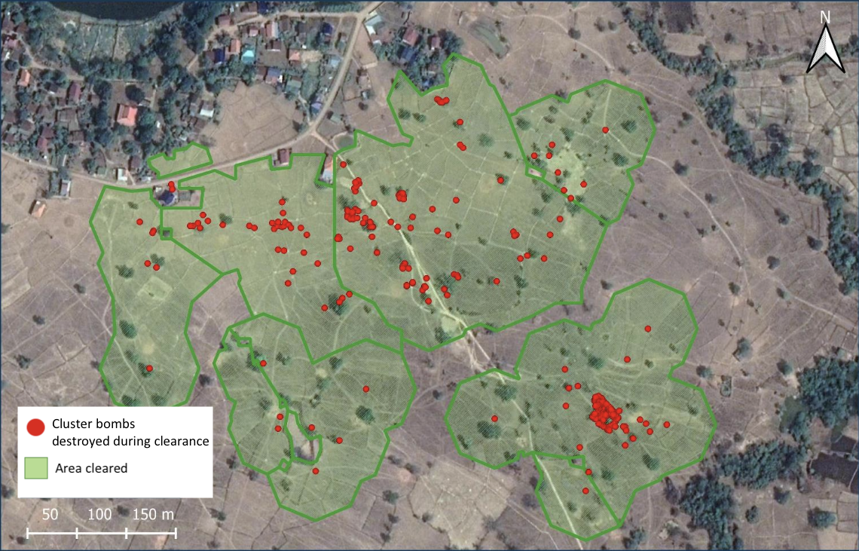The HALO Trust has marked a major milestone in the clearance of unexploded ordnance (UXO) from Laos' most heavily-populated province by destroying over 100,000 items. The clearance of the cluster bombs, aircraft bombs and other explosives follows HALO's completion of a comprehensive assessment of almost 500 villages in Savannakhet Province - meaning every community in the country's most heavily bombed region.

HALO Laos' area of operations

Bombing Data shows the routes of the Ho Chi Minh Trail
Savannakhet Province is in the central part of Laos, bounded to the east by Vietnam and to the west by Thailand. The Mekong river runs along the border with Thailand. The province is about the size of New Jersey and home to just over one million people–13 per cent of Laos' population.
It is predominantly rural, with heavy forest cover. Local people grow rice and cassava as their staples and increasingly bananas as a cash crop. To the east of the province the hills rise towards the Vietnamese border and this area was the location of the multiple, cross-cutting routes of the Ho Chi Minh Trail during the Second Indochina War of the 1960s and 1970s.
From it's HQ in Sepon at the heart of the contamination zone, HALO has trained and employed 1,400 local people who work across the province on survey and clearance. HALO is the largest employer in the area and the US flags on staff uniforms and vehicles are a ubiquitous presence in the surrounding towns and villages.
HALO recruits evenly across different parts of the province and among every ethnic group. Every job is heavily over-subscribed. The demographic split is exactly 50:50 women and men and the US funding that is making their own communities safer is also training the clearance staff in new skills and responsibilities. In this under-developed corner of Laos, many villages lose all their young people to jobs in Thailand's informal economy.


HALO has worked closely with other clearance operators and the Government in Laos on the development of a data-driven technical survey methodology known as the cluster munition remnants survey (CMRS). HALO strives to use the survey process to focus its work on the areas with the greatest humanitarian impact – sites close to communities, schools and roads are the priority.
The CMRS process begins with a village meeting where heads of households and village elders tell a HALO survey team about known cluster munition contamination, the history of the area during and after the war and the history of accidents. Villagers are encouraged to inform the survey team of any items of UXO they know the location of, and to spread the word throughout the community that HALO will destroy any items reported.
The HALO survey team will locate and destroy all items of UXO reported by the locals and record the UXO type and location. These locations are then used to setup the technical survey search area.
HALO survey teams use a system of 160ft x 160ft colour-coded boxes, centred on discovered items to rapidly survey a wide area and produce a polygon known as a 'confirmed hazardous area' (CHA).
Once CHAs have been created, cluster munition clearance teams will use metal detectors to methodically search every square metre of the CHAs for items of unexploded ordnance. During clearance, the area of the CHAs is extended where necessary in order to clear a 160ft radius around any cluster munitions found.

HALO technician Kong Keo
The survey of Savannakhet was part of a wider US-funded national CMRS project that was implemented by HALO, and other UXO-sector operators, across six provinces in Laos. In Savannakhet, this involved the survey of all villages identified by the National Regulatory Authority as being potentially impacted by cluster munition contamination; a total of 492 villages across 14 districts.
When the project was concluded in August 2022, HALO had undertaken CMRS in 481 of the 492 target villages. In these 481 villages HALO identified 2,356 previously unrecognized confirmed hazardous areas.

A risk education class in Hinsavang Village School
In addition to survey and clearance, US funding also supports HALO's outreach to schools and communities to teach local people what devices to watch out for and how to report dangers. Since it started operations in Laos in 2013, HALO has provided 200,000 local people with risk education lessons.


